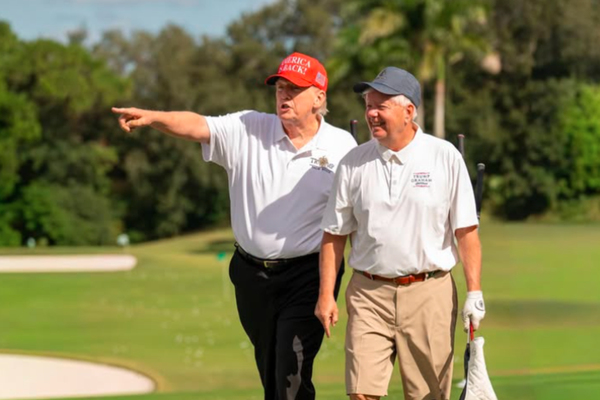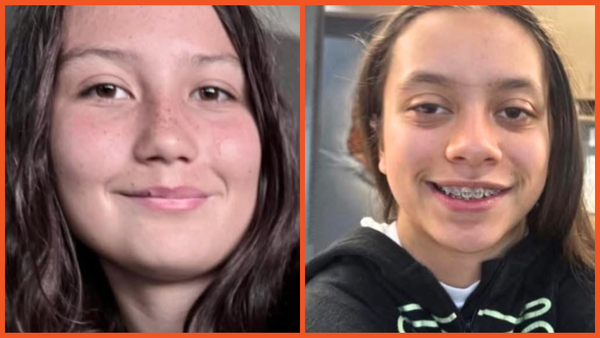Would you believe it hasn’t even been a whole year since then-mayor Lori Lightfoot reached a three-year agreement with NASCAR on the downtown Chicago Street Race, which revs up for real this weekend?
To some of us, it might seem stock-car racing’s traveling circus has been pounding away at the streets surrounding Grant Park, getting our lakefront scene race-ready, for even longer than that.
And for a stick-and-ball type who has found himself having to write about racin’ lately, the whole thing has felt rather like a mini-lifetime. Sports-wise, a great many of you no doubt can relate. Chicago is anything but NASCAR country, at least not yet; not for real, anyway.
But now, in NASCAR’s 75th season, it’s going street racing for the first time at its top level, the Cup Series, and doing so on our turf. A lower-level circuit used to run races on the streets surrounding the Los Angeles Coliseum, but the publicity and hype around this Chicago weekend blows L.A. out of the water.
“We’ve never seen anything like this,” said Kurt Busch, one of the sport’s superstar drivers. “It’s just a huge deal.”
The Xfinity Series — NASCAR’s second-tier circuit — has the Loop 121, a 55-lap race around the 2.2-mile course, on Saturday. Then the biggie happens Sunday, the Cup Series’ Grant Park 220, a 100-lapper on the same course, which features seven 90-degree turns that will challenge the field in a quite unusual manner.
During the past week, the Sun-Times invited readers to submit questions about the weekend. Several of those questions are summarized below, with answers from a variety of NASCAR drivers and officials. Hopefully, this will help get all our motors running.
Have you gotten a good understanding of what the varying street surfaces will be like and how different this will be from a traditional, non-street track? What will be most challenging about it?
Harrison Burton, Cup Series driver: “The city and NASCAR have done a great job of repaving the surfaces that kind of needed to get repaved, and there’s kind of a mixture of three: You’re going to have your normal kind of used streets and roads; you’re going to have fresh repave; and then there are some concrete sections as well. … I’ve been on it in a simulator and that’s one thing, but you don’t really get a feel for every crack, every detail, the way that you normally need to in the race car in the virtual world. Every track we go to, there’s all these little things that you have in your notes and memorize this and that to be ready to go for each weekend. This weekend, there’s none of that, so we have to go find out the hard way. … I think they’ve done a good job of kind of sealing over the manhole covers and everything that would damage the cars. The one big thing is the street joints, the connecting joints of going over bridges and whatnot; there’s more bumps than what we’re used to or, I guess, a different kind of bump than what we’re used to.”
Ricky Stenhouse Jr., Cup Series driver: “The surface is going to change through the whole track. Most of our race tracks, it’s the same surface everywhere. Here, being a street course and being totally different — going to so many different streets that probably were paved at all different times — that changes. It’ll be hard on the tires. Some spots will be slick, some spots will be rough and some spots will be smooth. That’s part of the street course, part of the fun and us trying to figure this out.”
What about your car had to be changed/modified to better suit the road conditions?
Burton: “We’re coming from Nashville, which is an oval that’s over a mile with a lot of banking, and so from that weekend to this weekend it’s a completely different setup. All the shocks and springs, everything is different. Other than that, from a normal race weekend [to] a road course, not a whole lot. We’ve got a different setup and everything, but not a whole lot is structurally different.”
Busch: “The car’s pretty much the same, but it’s going to be a matter of the driver not over-driving it because city streets are a lot slicker than a regular race track.”
What’s the fastest these cars will go on Lake Shore Drive, which everyone seems to agree will be the fastest stretch of the course?
Stenhouse: “I was thinking probably 160, and that’s going from Turn 2 to Turn 4. I’m not sure what’s the fastest somebody has been on Lake Shore Drive, but hopefully that can be us.”
Busch: “I think we’ll see 155 down Lake Shore, I really do. … We have 700 horsepower, so we can get a lot done really quick.”
Jeff Burton, NBC Sports analyst: “If you look at simulators and stuff like that, mid-130s, maybe 140ish, but what you can’t simulate is the amount of grip, so what matters is how much speed can you carry on the corners before the long straights. The thing is, they’re going to be slow coming to those straights because they’re 90-degree corners for the most part, so simulating and understanding how much grip the cars are going to make as they’re building speed, we have no way of doing that because you can scan the surface, you can do all that, but until you get out there, you don’t know. I don’t think it’ll be 160.”
As far as the flow of the race, will we see low average speeds due to excessive cautions, crashes, all the 90-degree turns, etc.?
Jeff Burton: “Well, the truth is, we don’t know. And every time we think we know, we’re wrong. … I think there will be a lot of patience. I think drivers will be smart. But [there] comes a point where they’re going to pay the check and you’re going to give somebody a trophy, and then everybody starts pushing hard and that’s when we get into cautions and accidents. But you just never know what’s going to happen. Some of the toughest race tracks in the country that we go to, you think, ‘Oh, my God, we’re going to have 100 cautions,’ and you have one. And vice versa, we go to races you think are going to be pretty calm, and it’s chaos. … We can see things on Saturday and learn from that, but that doesn’t mean that’s how Sunday’s race will go.”
How many tickets have been sold, and how does that amount compare with races in other cities?
Julie Giese, track president: “Ticket sales have been really good. … We don’t actually release attendance numbers, so wouldn’t be able to compare. But the great part about a road course is that you have the ability from a general-admission perspective, people can walk around. So you’re not just strictly set on seats. [It’s] like the general-admission grounds pass that you have at a golf tournament or festival, allowing us to ticket more people in.”
NASCAR spokesman: “Tickets have been sold to visitors from all 50 states and 14 countries among the estimated 50,000 fans attending each day both in the ticketed area and the free fan experience at NASCAR Village in Butler Field. More than 80 percent of the ticket purchasers are coming to their first NASCAR event.”
We’ve seen the retaining walls and fences at superspeedways. How well has safety been addressed here?
Giese: “Safety is obviously our top priority, not only for everyone attending the event but everyone around the event as well as our competitors. So when you look at the footprint of the course itself, we have concrete barriers that are lining the entire course. Those barriers each weigh 10,000 pounds. They’re 12 feet long, about 4 feet tall. Above that is another 8 feet of catch fence, special fence that has cabling as well as a mesh to just capture anything that might go in touch with that. And then from there when you look at the turns, we’ll also have what we call tire packs; those are actual tires that are put together to absorb [some of the impact if] a car were to get into one of those before they even get to the concrete barrier. And then, from a viewing perspective, we have the catch fence and the barriers and we actually will have a 15-foot buffer before we have another perimeter fence, and that’s really where the spectators would start to view. The safety measures that we’re using here are used at all the street races across the world. … We’re confident in those measures.”
What will the noise and vibrations mean for art in the Art Institute and life in the Shedd Aquarium?
NASCAR spokesman: “NASCAR will use special mufflers for race teams competing in the Chicago Street Race, which is estimated to lower sound levels by as much as 10 decibels. NASCAR also worked to limit the number of on-track hours to less than 10 hours total over the two-day event. Race cars will not be on-track until 10 a.m. on Saturday and 4:30 p.m. on Sunday. That is a significantly reduced active track time compared to traditional race events. The Art Institute and the Shedd Aquarium have indicated the race won’t affect their facilities, art or animals.”
Will NASCAR be paying for any street damage caused by the race? And how quickly will it be repaired?
Giese: “If there is anything that does occur during the race, we will make sure that we make those repairs and as quickly as possible. We’ve committed to leaving the park and the streets in as good a condition, if not better condition, than when we got here.”







